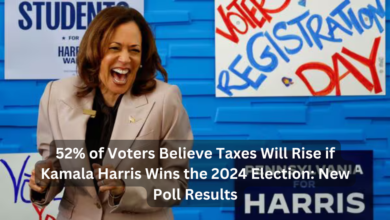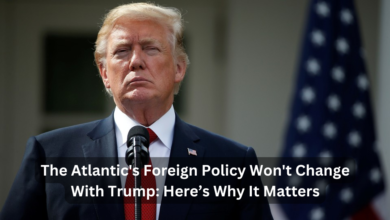Kamala vs Trump Policies: A Comprehensive Analysis

In the ever-evolving political landscape of the United States, Kamala Harris and Donald Trump stand as prominent figures representing two very different visions for the future of America. Their policies on key issues such as healthcare, immigration, climate change, and the economy have been the subject of intense scrutiny and debate. In this article, we aim to provide a thorough comparison of their political stances, highlighting both the differences and implications of their policies as of September 2024.
Introduction to Kamala Harris and Donald Trump
Kamala Harris, the first female Vice President of the United States, has consistently advocated for progressive reforms that address social inequality, racial justice, and environmental sustainability. On the other hand, Donald Trump, the 45th President of the United States, is known for his populist, America First agenda that focuses on economic nationalism, border security, and deregulation.
Both politicians have shaped their platforms around the core issues of economy, healthcare, and immigration, but their approach to these matters could not be more different.
Economic Policies: Growth vs. Redistribution
Trump’s Focus on Deregulation and Tax Cuts
During his presidency, Donald Trump’s economic policies were anchored in corporate tax cuts, deregulation, and fostering an environment where businesses could thrive with minimal government intervention. His signature legislative achievement, the Tax Cuts and Jobs Act of 2017, lowered the corporate tax rate from 35% to 21%, which was aimed at boosting economic growth and increasing investment. Trump’s administration also took a hands-off approach toward regulatory agencies, significantly rolling back regulations in sectors such as energy, finance, and manufacturing.
Trump’s economic plan prioritized the free market, with the belief that wealth generated by corporations would eventually trickle down to the average American. By promoting deregulation and lowering taxes, he argued that businesses would reinvest their profits in the domestic economy, thereby spurring job creation and innovation. However, critics argue that this approach widened income inequality and primarily benefited the wealthiest Americans and large corporations, leaving middle-class and low-income families with limited gains.
Kamala Harris’ Focus on Economic Equity
In contrast, Kamala Harris has pushed for a more equitable approach to economic growth, emphasizing policies that support the working class and address income inequality. Harris supports raising the federal minimum wage to $15 per hour, expanding paid family leave, and providing tax credits for middle-class families. Her economic agenda focuses on infrastructure investment, green jobs, and providing financial relief to small businesses, particularly those affected by the COVID-19 pandemic.
Harris has also advocated for tax reforms aimed at ensuring that the wealthiest Americans and large corporations pay their fair share. Under her proposal, corporations that move jobs overseas would face higher taxes, while families earning under $100,000 per year would receive significant tax breaks. This approach reflects her broader goal of economic redistribution, wherein the gains of economic growth are shared more equally among all Americans, rather than concentrated at the top.
Healthcare Policies: Affordable Care Act vs. Private Sector Solutions
Kamala Harris’ Commitment to Expanding Healthcare Access
Healthcare has been a central issue for Kamala Harris throughout her political career. As a staunch supporter of the Affordable Care Act (ACA), she has pledged to expand access to healthcare for all Americans. Harris supports the introduction of a Medicare-for-All option, which would allow individuals to opt into a public healthcare system, thereby providing more affordable alternatives to private insurance.
Harris believes that healthcare is a fundamental human right and has advocated for reforms that would reduce prescription drug prices, expand Medicaid, and increase funding for mental health services. Her policies also prioritize preventive care, aiming to reduce long-term healthcare costs by promoting healthier lifestyles and early intervention.
Donald Trump’s Market-Driven Healthcare Approach
In contrast, Donald Trump’s healthcare policies have been rooted in a market-driven approach that emphasizes private sector solutions and reducing government involvement. During his presidency, Trump repeatedly attempted to repeal the ACA, arguing that it imposed undue financial burdens on both small businesses and individuals. Instead, he favored private health savings accounts and association health plans, which would allow individuals and businesses to pool together to purchase insurance at lower rates.
Trump’s healthcare agenda focused on deregulating the insurance market to increase competition and lower costs. He also introduced short-term insurance plans, which were cheaper but offered fewer benefits than traditional ACA-compliant plans. Critics argue that Trump’s approach would have left millions of Americans, particularly those with pre-existing conditions, without adequate coverage.
Immigration: Border Security vs. Humanitarian Solutions
Trump’s Strong Border Control
Donald Trump’s immigration policies have been among the most controversial of his presidency. His administration focused heavily on border security, with a particular emphasis on building the border wall between the U.S. and Mexico. Trump viewed immigration, particularly from Latin America, as a threat to national security and economic stability. He implemented strict immigration policies, including family separation at the border, the Remain in Mexico policy, and travel bans on several predominantly Muslim countries.
Trump also significantly restricted asylum, reduced the number of refugee admissions, and increased deportations. His immigration policies were designed to protect American jobs by limiting the entry of low-skilled workers and ensuring that immigrants did not overburden the country’s social services.
Kamala Harris’ Focus on Immigration Reform and Compassion
Kamala Harris, on the other hand, has consistently advocated for a more humane and comprehensive immigration reform. Harris has criticized Trump’s harsh policies, particularly the family separation policy, which she referred to as a “human rights abuse.” She supports providing a pathway to citizenship for undocumented immigrants, particularly those who arrived in the U.S. as children (the DREAMers).
Harris has called for the reform of the immigration court system to ensure that asylum seekers and other immigrants receive a fair and timely hearing. She also supports increasing the number of refugees admitted to the U.S. and reversing Trump’s travel bans. Harris’ approach is rooted in the belief that America is a nation of immigrants and that its immigration policies should reflect the country’s values of compassion and inclusivity.
Climate Change: Action vs. Denial
Kamala Harris’ Green New Deal Approach
Kamala Harris is a strong advocate for aggressive action on climate change. She supports the Green New Deal, a comprehensive plan aimed at addressing the climate crisis by transitioning the U.S. to a clean energy economy. Harris has called for net-zero emissions by 2050 and has advocated for massive investments in renewable energy, including wind, solar, and electric vehicles.
Her climate policy also focuses on environmental justice, ensuring that low-income communities, which are often disproportionately affected by pollution and environmental degradation, receive the support they need in the transition to a green economy. Harris believes that combating climate change is not only a moral imperative but also an economic opportunity, as the transition to clean energy will create millions of new jobs.
Donald Trump’s Support for Fossil Fuels
Donald Trump has taken a vastly different approach to climate policy, frequently downplaying the severity of climate change and rolling back environmental regulations. During his presidency, Trump withdrew the U.S. from the Paris Agreement, an international accord aimed at limiting global temperature rise. He also prioritized the expansion of fossil fuels, including coal, oil, and natural gas, arguing that these industries are essential for American energy independence and economic growth.
Trump’s administration rolled back over 100 environmental regulations, including those on air and water pollution, with the goal of reducing the regulatory burden on businesses. He believed that environmental regulations stifled economic growth and placed the U.S. at a disadvantage in the global market. Critics argue that Trump’s policies have set back efforts to combat climate change and have placed the country’s long-term environmental sustainability at risk.
Foreign Policy: Diplomacy vs. Aggression
Kamala Harris’ Multilateral Approach
In foreign policy, Kamala Harris supports a multilateral approach, working with allies and international organizations to address global challenges. She advocates for strengthening NATO, rejoining international agreements like the Paris Climate Accord, and rebuilding relationships with traditional U.S. allies.
Harris is a strong supporter of diplomacy over military intervention and has emphasized the importance of human rights in U.S. foreign policy. Her approach also focuses on addressing global inequality, providing aid to developing countries, and supporting international efforts to combat poverty and promote democracy.
Donald Trump’s America First Doctrine
Donald Trump’s foreign policy was defined by his America First doctrine, which prioritized U.S. interests over international cooperation. Trump frequently criticized NATO, threatening to withdraw U.S. support unless other member countries increased their defense spending. He also pulled the U.S. out of several international agreements, including the Iran nuclear deal and the Trans-Pacific Partnership (TPP).
Trump’s foreign policy favored bilateral deals over multilateralism and focused on trade protectionism, renegotiating trade agreements to benefit U.S. industries. His administration imposed tariffs on China, leading to a trade war that had significant economic implications for both countries.
Conclusion: Two Visions for America’s Future
The policies of Kamala Harris and Donald Trump represent two fundamentally different visions for the United States. Kamala Harris offers a future focused on economic equity, environmental sustainability, and compassionate immigration reform, while Donald Trump advocates for economic nationalism, deregulation, and a focus on border security.
As the political climate continues to evolve, these contrasting visions will shape the debate on the most pressing issues facing the nation. Ultimately, the choice between these two leaders reflects broader societal questions about the role of government, national identity, and America’s place in the world.
For further reading on the implications of these policies, check out this detailed analysis on economic trends under their administrations, and explore this resource for a deeper dive into climate change policies over the last decade.




